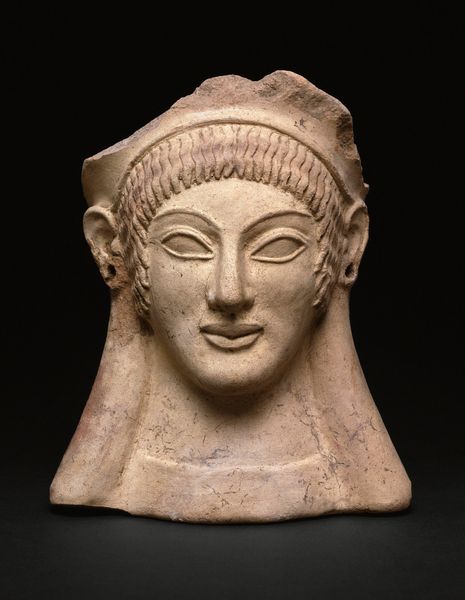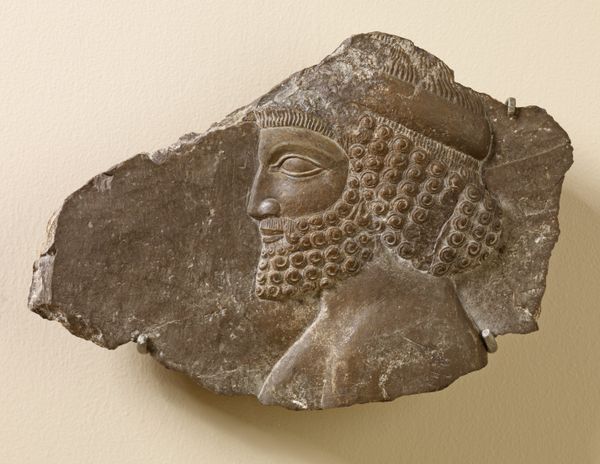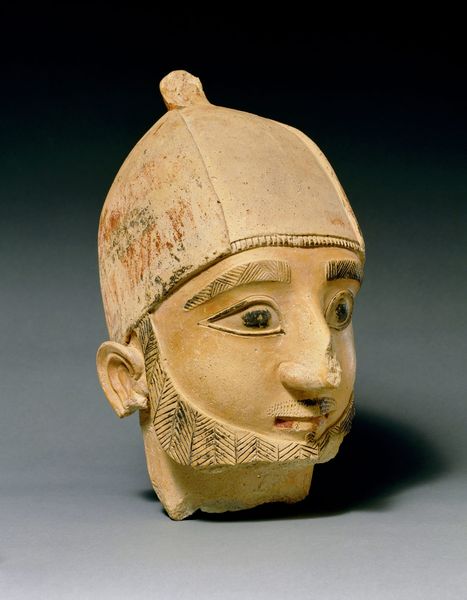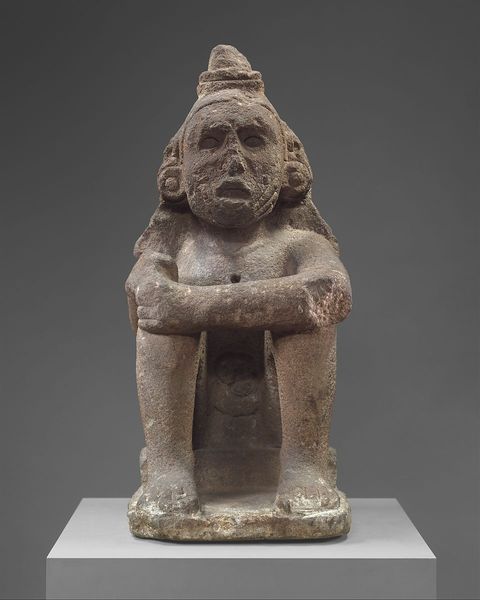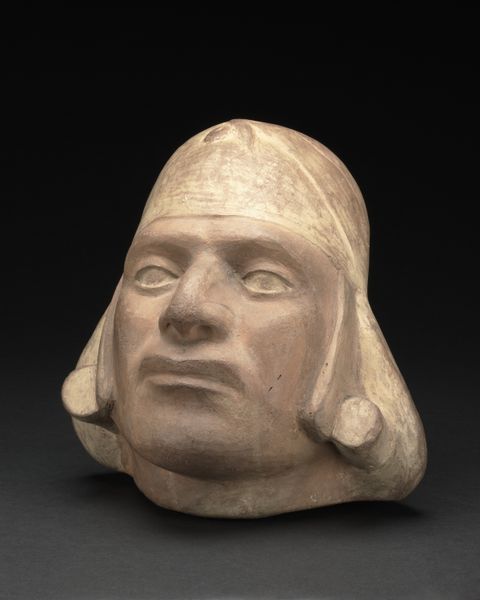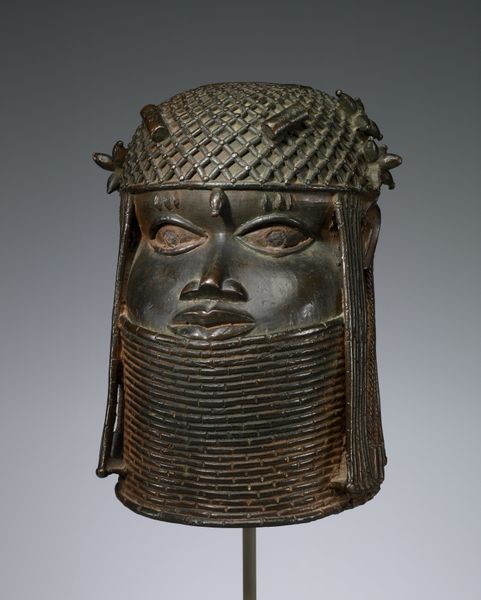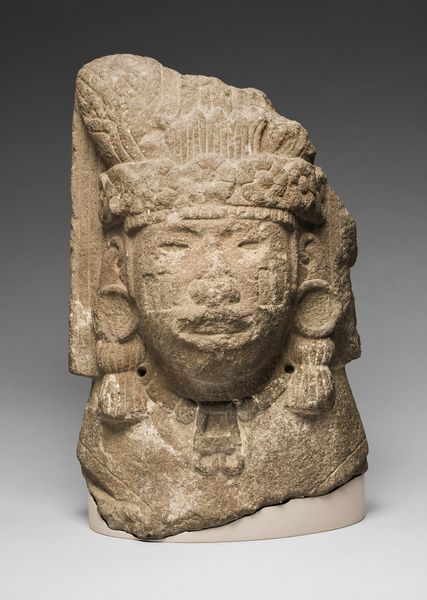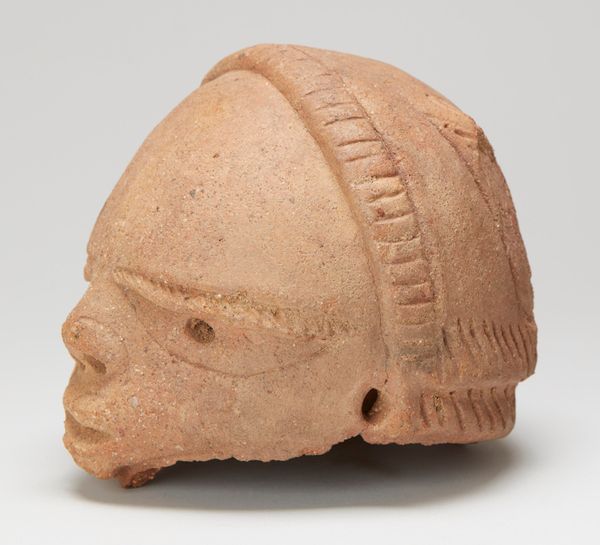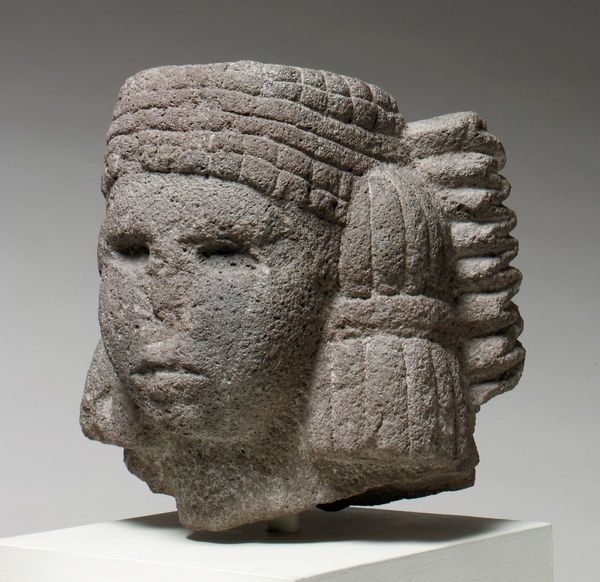
sculpture, marble
#
portrait
#
stone
#
sculpture
#
greek-and-roman-art
#
figuration
#
sculpting
#
ancient-mediterranean
#
sculpture
#
marble
Dimensions: 29.2 × 20.3 × 26 cm (11 1/2 × 8 × 10 1/4 in.)
Copyright: Public Domain
Curator: Welcome. Before us is the “Head of a Bearded Man,” a marble sculpture created in Cyprus around the 5th century. It's now housed here at the Art Institute of Chicago. Editor: My initial impression is one of striking detail— the patterned beard and headdress give an almost textile-like feel to what is, of course, solid stone. Curator: Precisely. The patterned beard you notice suggests mass production techniques— standardization and repetition typical within workshops of the time that circulated throughout the Mediterranean area. Each carefully placed marble ‘curl’ shows great craftsmanship and access to advanced sculpting technology that might imply specialized labor was used. Editor: And I’m thinking about who commissioned such a work and the political implications. Consider the beard itself: what did this style represent in terms of status, power, or religious affiliation in its time? Was this an individualized portrait or a more idealized depiction representing an important civic or religious figure? Curator: The material and its creation would signify importance. Marble was valuable, after all. The amount of time required to complete something this size, this detailed, speaks to an allocation of resources within a larger social context of art production. We see in this an active commerce and patronage of art. Editor: Looking at this piece in conversation with other works from that period helps us understand that society's artistic conventions, the visibility and role of this piece within it. Was this prominently displayed for public view, perhaps influencing cultural values and collective identities? Or reserved for an elite class? Curator: It certainly begs the question of access and power dynamics present at the time, who could commission or own art such as this. Considering what this society valued based on the kind of art they supported highlights some of their key principles. Editor: This close examination reminds us that artifacts can tell stories about artistic workshops as well as broader questions around wealth distribution, cultural performance, and what roles these served in Cypriot society so long ago. Curator: Yes, and in doing so reveals broader networks of craftsmanship, trade, and patronage operating in the ancient world that connect communities of people across great distances.
Comments
No comments
Be the first to comment and join the conversation on the ultimate creative platform.
